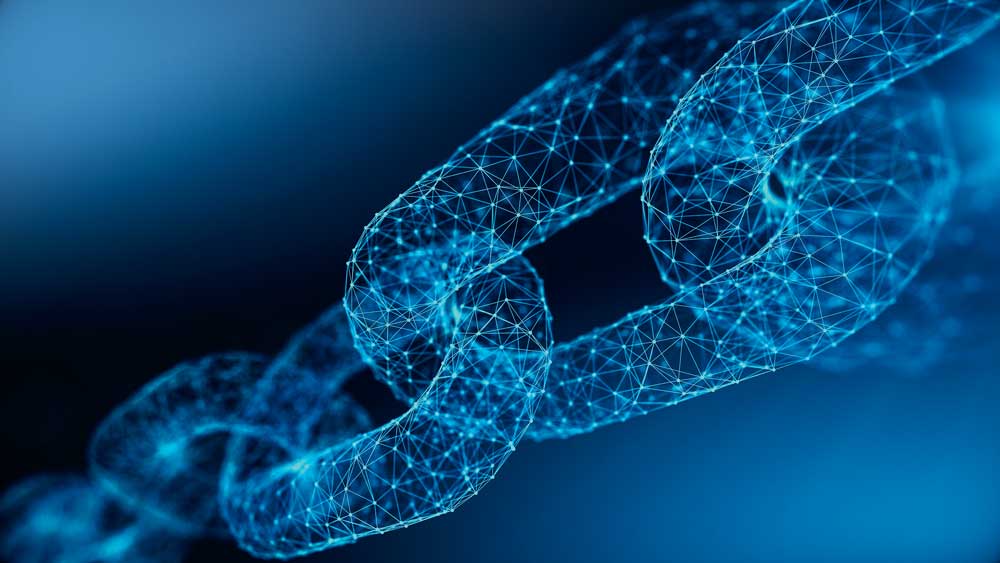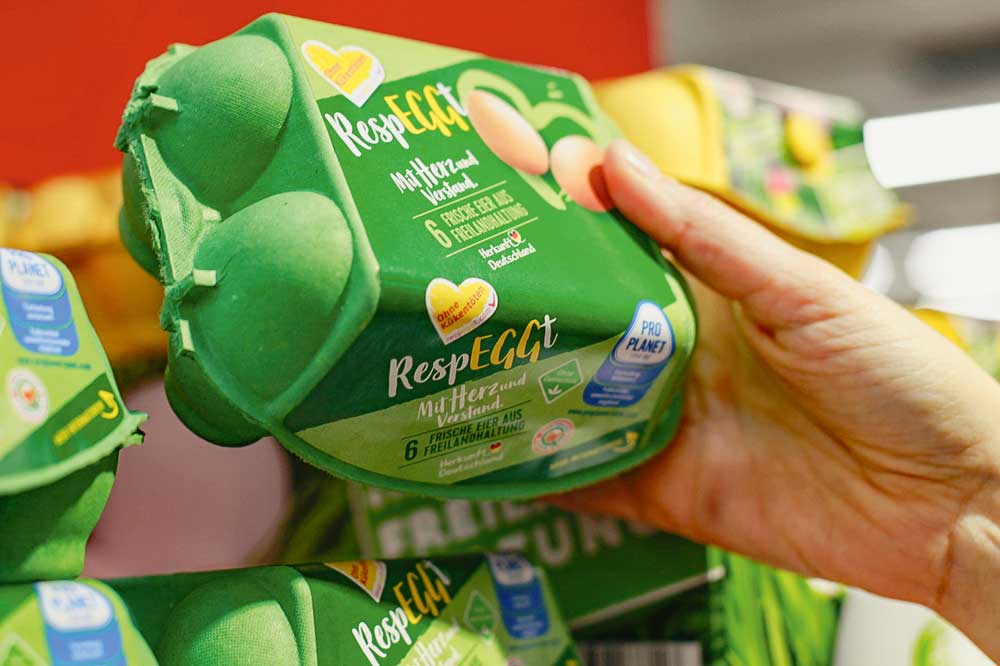Blockchain: Maximum transparency
By Martin Stoussavljewitsch, Youki GmbH, Regensburg
Nowadays, trade interactions are often based on trust. Are package contents really as printed on the delivery note or certificate? Is the soya feed supplied for the dairy cows actually non-GM? Does the weaner batch you have just penned really come from a single herd? Increasingly farmers, dealers or consumers demand provable details of origin and absolutely traceable transport routes. Inconsistent, or even missing, information, paper-based documentation and interface problems are all dangers within data exchange procedures. Blockchain technology promises to overcome the present weak points in the delivery chain. The motto: trust is good, transparency is better.
What is blockchain?
In simple terms blockchain is a decentral protocol for transactions between participants that transparently records every change involved in the process. The individual data sets, the blocks, are cryptographically linked and can be continuously added to the chain. Every block contains a unique reference to the preceding block, creating an unchangeable and tamper-proof register of all transactions. These data sets are replicated on every computer involved in the network. Therefore every participant in the chain has the same amount of information in real time. There is no software application. There is no supervisory body. The blockchain is a decentral technology on an open and free infrastructure storing and linking individual data sets which can involve certificates, contracts such as a purchase order or a financial transaction, objects from the real world or even data from a production process.
Is the blockchain a technological revolution?
The Internet-based information system can completely change trade as we have known it so far. For the first time in human history we have the ability of reducing risk, not only with political and business institutions such as banks and governments, but also alone through the application of technology. About ten years ago, a hacker with the synonym Satoshi Nakamoto created the Bitcoin blockchain and, with that, the best-known cryptocurrency in the world. He violated the fundamental rules regarding trading setup with middlemen and institutions and established a completely new beginning. His blockchain principle is revolutionary: a currency that works without regulating banks, that is not under the control of a state institution: an alternative concept to everything allowed in trading beforehand.
Blockchain – a protocol of trust
How does this technology reduce risk in trade? Risk has always been a considerable factor within business economy. Two forms of risk we face in almost all our daily business situations can be used here to emphasise the role of blockchain technology.
We want to conduct business and do not know with whom we are dealing. Assume that we wish to buy a second-hand ‘phone on eBay. Firstly, we collect information about the vendor. Is our counterpart someone who has often done business on the platform? Are there references available from other buyers and profile information, or is nothing along these lines available?
Such knowledge helps to reduce uncertainties about the person you are doing business with. The problem is that the information is very fragmented, from market place to market place, and not always clearly attributable. Just think how many user profiles you have. Blockchains enable us to create open global platforms on which may be stored appropriate references from all sorts of sources. This makes possible the creation of a user-managed portable identity for conducting all types of business activities in a completely new manner, in the physical as well as the digital world.
Risks in the transparency of goods and services
Customers like to know that the purchased product comes with a given value, e.g. out of sustainable production, organic farming or from regional production. The buyer has to trust the trading middleman that what is promised on the label is also the truth. What is required is background production and delivery information with readily available tamper-proof data over the process.
The problem with many companies that produce in labour-intensive value adding chains is that they have all these different process steps within a horizontal delivery chain. Many firms participating in a production process do not have the same databank, or even the same infrastructure. Thus it’s really difficult to present the evidence of transparent production over a period of time. With the help of blockchain we can produce a common reality involving many participants within the entire process chain. We can create a decentral databank with the same efficiency as e.g., that of a large player in grocery retailing but without the latter’s central control.
All the companies involved work with the same integrated databank without the need of having to trust one another. For the consumer, this means that there is far more transparency over products and their characteristics, based not on promises with reciprocal trust needed, but instead on factual evidence. While a product moves forward in the real world, we can see how its digital certificate, or its digital twin, moves within the blockchain and, e.g. added value is incorporated. This represents a completely new world of product transparency.
The future promises still more
The blockchain certainly isn’t the solution for everything, although much in this tone is written about it in the media. The truth is that this technology is still in its beginnings. If we compare it with the development of mobility over the last century, we have just arrived in the steam engine era. Many applications must be further researched and tried out before we understand where the blockchain can really fulfil all its potential.
However, one thing is sure. Already, blockchain has the technological capacity of documenting human interactions - currency exchanges, all types of digital and physical asset values, even our own personal characteristics – in a completely new form. In a certain way, these new applications represent a type of technological institution comprising many of the advantages of the traditional institutions that we’ve already been applying for centuries in society, except that this new institution is decentral and, with that, allows us to transform many uncertainties into risk-free certainties.
Blockchain and agriculture
In agriculture there’s permanent discussion with consumers over their high demands for sustainability, transparency and more nearness. But in this sector too, the new possibilities for information exchange will have massive effects on present business models. The supply chain of a particular food product from field right through to plate will be completely traceable. While you, as farmer, must work ever more efficiently on less and less total land area in order to achieve increasingly higher yields, the consumer wants an agriculture without chemicals and without gene technology. Consumers would like to trace as precisely as possible the ways in which animals are reared and managed and be fully informed about the conditions under which crops are grown and harvested. The appropriate data are mostly available even now.
Networking and transparency are two of the most decisive factors in the context of potential benefits of the new technology for agriculture and the food trade. Within the blockchain, information on the procedures involved may be accessed at any time. From production of the raw material over the transport and onto the packaging history, all data can be stored, a standard of traceability with enormous potential for the food industry.
»Product documentation« as example
Despite digitisation, there remains a large number of commodity businesses that still rely on paper documentation, a situation which slows down or obstructs the physical movement of goods. The application of international import and export regulations, the banks involved, the external accountants and a large number of other players, all mean high costs. Paper documents must be signed, confirmed and witnessed by sales people, custom officers, inspectors and civil servants. This procedure is susceptible to long delays, is complicated and thus leads to errors and various risks including loss and theft. This documentation of goods is predestined to be replaced through blockchain.
Traceability within seconds
Fair trade, organic and »ethically faultless«. How accurate are such tickets and labels in reality? In most labour-intensive delivery chains there are so many different steps involved that it is relatively easy for the source to be separated from the product. It would be a good thing if we could trust information given on source of product, particularly in the food sector. After all, especially in serious cases, this can save lives when an infection source can be identified in a few seconds instead of days. For instance, the 2011 E. coli (O104:H4) outbreak in Germany resulted in over 3500 people suddenly falling ill through intestinal infection and in 53 deaths. At that time there followed weeks of public insecurity until the officials responsible eventually identified plant sprouts as alleged main source of the infection.
Summary
All trends and new developments are subject to criticism by sceptics and the blockchain is no exception here. Decisive for the user is not only the technical and business efficiency potential offered, but also the legal framework. At the moment, the latter leaves many questions still to be answered.
But whatever happens here, we can expect blockchain to change the entire sector. We must prepare ourselves because, in tomorrow’s world, many separated autonomous institutions will emerge to play an important role in trade and in the business world. New business models will rethink and reinterpret the agricultural sector, attracting with promised added values for producers through to consumers with not a middleman in sight. The question will be: who starts this new technology first in order to benefit from the advantages for real business models?





